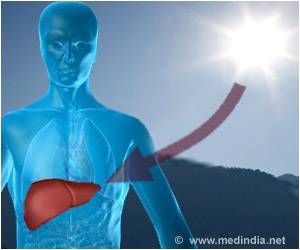People living in areas where they are more exposed to the sun’s rays are less likely to develop multiple sclerosis. The UV-B rays from the sun stimulate the production of vitamin D in the body which lowers the risk of MS.
- People who are more exposed to the sun’s rays are less likely to develop a neurological condition called multiple sclerosis (MS).
- People who lived in sunnier climates with the highest exposure to UV-B rays had 45% reduced risk of developing MS.
- The UV-B rays from the sun stimulate the production of vitamin D in the body which is important in reducing the risk of MS.
Multiple Sclerosis and the Sun
Multiple sclerosis is a disease that affects the central nervous system that includes the brain and the spinal cord. In MS, the protective layer of the neurons called the myelin is attacked by the immune system, thereby disabling neuronal communication between the brain and the rest of the body. Previous studies have linked low levels of vitamin D to an increased risk of MS. But exposure to the sun’s rays, specifically the UV-B rays help the body produce vitamin D and thereby plays an important role in reducing the risk for MS."While previous studies have shown that more sun exposure may contribute to a lower risk of MS, our study went further, looking at exposure over a person's lifespan," said study author Helen Tremlett, PhD, of the University of British Columbia in Vancouver, Canada.
Study Overview
The study included 151 women with MS and 235 women of similar age without MS who were identified from the larger Nurses' Health Study. About 98% of the participants were white and 94% had fair to medium skin. The participants lived across the US in a variety of climates. Among those with MS, the average age at onset was 40.The participants were given questionnaires about lifetime summer and winter sun exposure. Based on the answers to the questionnaire, the women were divided into three groups: low, moderate and high UV-B ray exposure.
Study Findings
- Based on place of living: Women who lived in sunnier climates with the highest exposure to UV-B rays had 45% reduced risk of developing MS compared to women who lived in areas with the lowest UV-B ray exposure.
- Based on age: Women who lived in areas with the highest levels of UV-B rays between ages 5 to 15 had a 51% reduced risk of MS.
- Also, women who spent more time outdoors in the summer during the ages 5 to 15 in locations with high exposure to UV-B rays had a 55% reduced risk of developing MS during adulthood compared to those with the lowest exposure.
Limitations of the study
- Sun exposure was self-reported by the participants
- Almost all participants were female and white thereby the results of the study may not apply to other populations.
- Helen Tremlett, Feng Zhu, Alberto Ascherio and Kassandra L. Munger. Sun exposure over the life course and associations with multiple sclerosis. Neurology, March 7, 2018 DOI: 10.1212/WNL.0000000000005257















